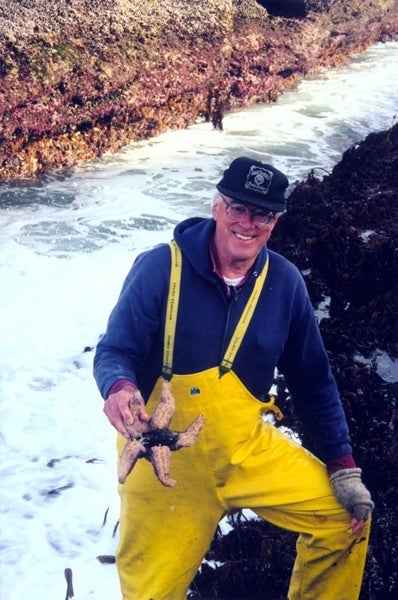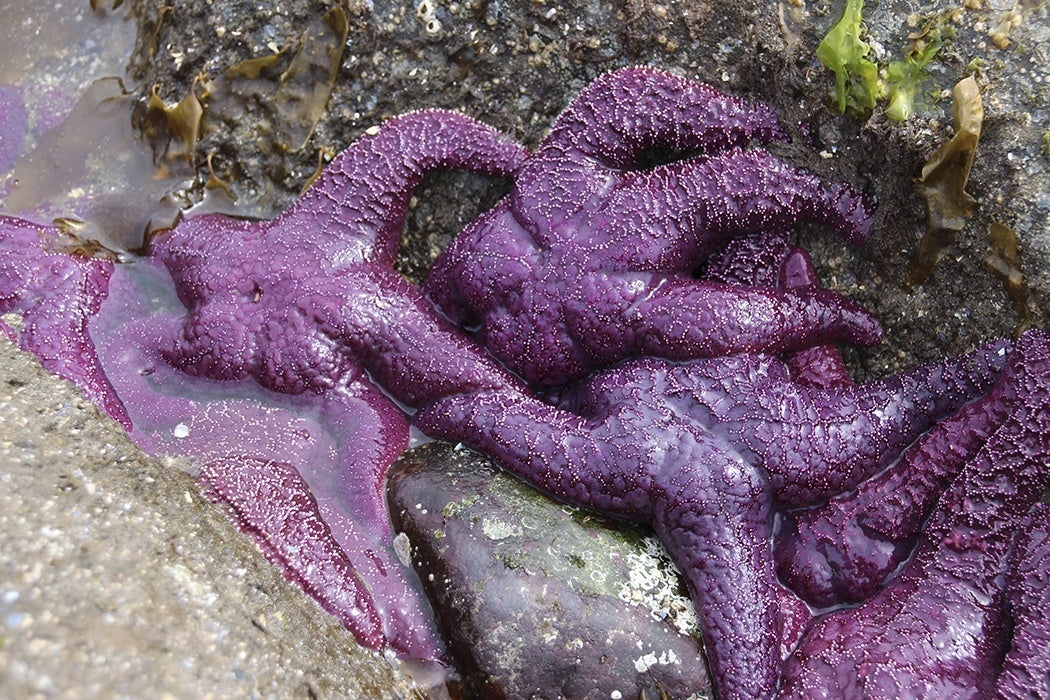Robert Paine, groundbreaking ecologist, has died at the age of 83. Working in rocky Pacific tide pools, Dr. Paine made many contributions to the field of ecology, but his most influential work concerned the very nature of species interactions. Thorough careful experimentation, Dr. Paine made a profound discovery—not all species in an ecosystem are created equal. Some species exert undue influence in an ecosystem, while other species have little impact. He dubbed these movers and shakers “keystone species,” and ecology has never been the same since.
In honor of Dr. Paine’s life and career, take a look at the 1966 research that led to the keystone species concept. Dr. Paine’s seminal work, like much of his career, was performed in the rocky tide pools of Washington state. The top predator in these pools is the Pisaster starfish, which feeds mainly on mollusks. Paine kept one area Pisaster free while maintaining an adjacent area as a control. Field manipulations such as these have become widely used in ecological research.
The results of Paine’s experiment were counterintuitive. Species diversity was much higher when Pisaster was present than when they were removed. In Pisaster’s absence, Acorn Barnacles Balanus glandula had crowded most other species by rapidly using up the available space. Months later, California mussels Mytilus californiensis overran the Balanus. The only remaining algae was growing on the mussels. Species were impacted whether or not they were direct starfish prey.

Pisaster maintained balance in the ecosystem by selectively eating barnacles and mussels, preventing their otherwise excessive spread. Dr. Paine summed up Pisaster’s influence: “local species diversity is directly related to the efficiency with which predators prevent the monopolization of the major environmental requisites by one species.” Three years later, in 1969, Paine noticed that Pisaster single-handedly, er, armedly, controlled the distribution of the Tegula snails. Through such influence, Pisaster maintained open space for a variety of species to coexist. He summed up his keystone species idea thus: “…patterns of species occurrence, distribution and density are disproportionately affected by the activities of a single species of high trophic status.”
Today, the keystone species concept influences almost all areas of ecology. While Dr. Paine originally envisioned keystone species as top predators (“high trophic status”) the concept has expanded to include any influential species. Forest elephants, for example, while not at the top of the food chain, have great influence over their environment and are considered by many to be keystone species. In conservation, keystone species are sometimes singled out for protection; protect the keystones, maintain the system. The concept transformed the field of ecology. And it all started with a couple of rock pools.







